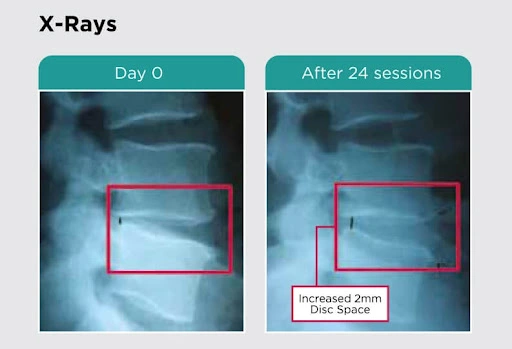
If you are considering spinal decompression therapy, you may be wondering what to expect from the treatment process. In this blog article, we will discuss four things you can expect from a spinal decompression treatment, including what the treatment involves, how it works, what to expect during the procedure and potential benefits. By understanding what to expect from spinal decompression therapy, you can make an informed decision about whether it is the right treatment option for you.
Spinal decompression therapy can be used to treat a variety of spinal conditions, including slipped discs, sciatica, degenerative disc disease, and spinal stenosis. The treatment can be customized to the patient’s specific needs, including the amount of traction applied, the duration of the treatment, and the frequency of the sessions. Most patients report feeling relaxed and comfortable during the treatment, and many experience relief from their symptoms after just a few sessions.

Patients undergoing spinal decompression therapy often report significant improvement in their condition. Typically, noticeable results can be observed within 20 to 25 treatment sessions. However, it is important to note that the exact number of sessions required may vary depending on the severity of the condition and individual factors. The progressive nature of the treatment allows for continued improvement even after the treatment program is completed. In fact, studies have shown that patients can experience ongoing benefits for up to four years following the treatment program. This sustained improvement demonstrates the long-lasting impact of spinal decompression therapy and highlights its potential to provide lasting relief and improved quality of life for patients dealing with spinal conditions.

Chiropractic adjustments can help to improve spinal alignment and mobility, which can further reduce pressure on the nerves and discs. Additionally, chiropractic care can help to address underlying muscle imbalances and postural issues that may contribute to spinal conditions.
Incorporating chiropractic care into a spinal decompression treatment plan can help to enhance the effectiveness of the treatment and promote long-term healing. A healthcare professional can develop a customized treatment plan that includes both spinal decompression therapy and chiropractic adjustments based on the individual’s specific needs and condition.
Our spine and nerve specialists can treat all these issues, which include headaches, neck discomfort, muscular pain, and lower back pain. We focus on detecting the root of the problem, structural corrections and possibly permanently reversing the problem.


